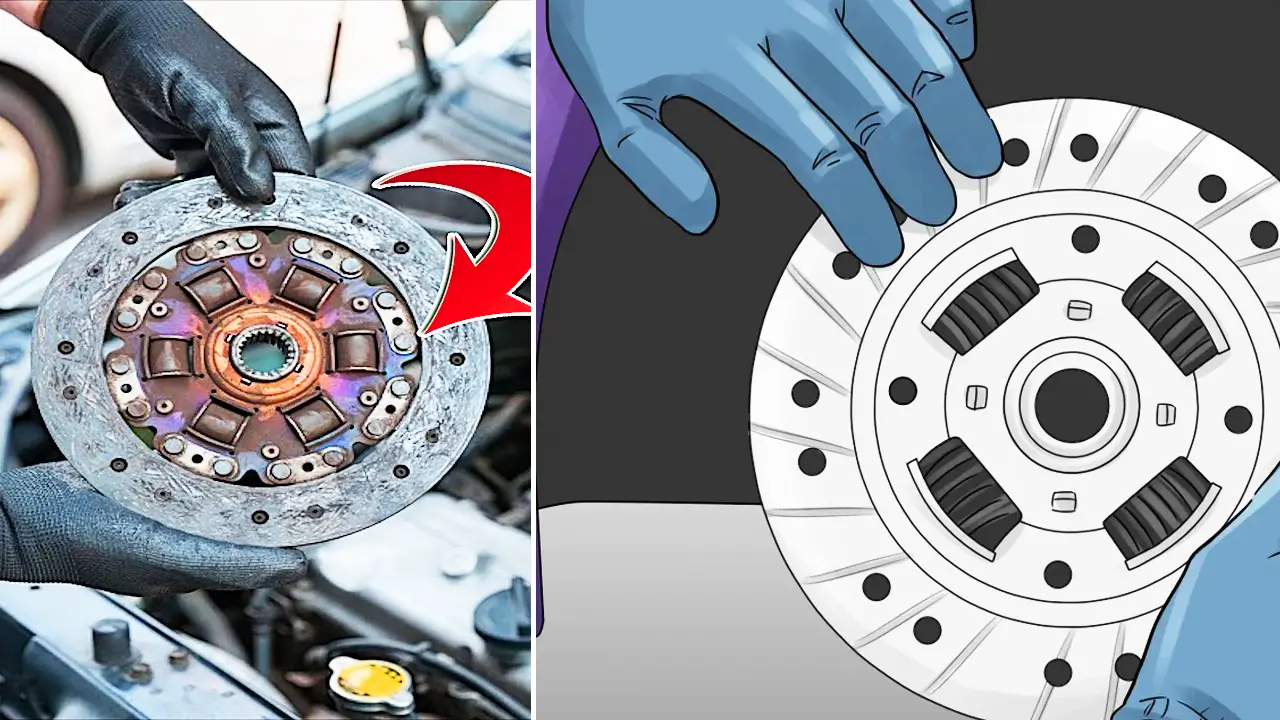In a manual transmission vehicle, the clutch is an essential component that allows the engine to engage and disengage from the gearbox. A well-maintained clutch ensures smooth gear shifts and optimal power transfer. However, as the clutch wears out due to friction, misuse, or general wear and tear, your vehicle’s performance can suffer. Regularly checking your car’s clutch can help you prevent unexpected breakdowns and costly repairs. In this guide, we’ll walk you through the steps to assess the health of your car’s clutch.
Symptoms of a Worn Clutch
Before diving into mechanical tests, it’s important to recognize the warning signs of a worn clutch. Many of these symptoms can be noticed during everyday driving, making it easier to spot potential issues early.
1. Slipping Clutc
One of the most common signs of a worn clutch is slippage. This happens when the clutch doesn’t fully engage, causing the engine RPMs to rise without an increase in speed. You might notice this while accelerating or driving uphill. Slipping can indicate a worn clutch disc or oil contamination between the clutch disc and pressure plate.
2. Difficulty Shifting Gears
A healthy clutch allows for smooth gear shifts. If you experience grinding noises, difficulty engaging gears, or hesitation while shifting, especially between first and second gear, it could point to a clutch problem. Possible causes include a damaged clutch disc, issues with the clutch release mechanism, or low hydraulic fluid in the system.
3. Spongy or Soft Clutch Pedal
The feel of the clutch pedal provides crucial feedback about the condition of the clutch. A spongy, soft, or unusually light pedal could indicate air in the hydraulic lines, a malfunctioning master or slave cylinder, or a worn-out pressure plate or release bearing. On the other hand, a heavy pedal may suggest the pressure plate is worn or the clutch system is under stress.
4. Burning Smel
A burning odor when shifting gears, particularly in stop-and-go traffic, is another telltale sign of clutch problems. This smell is caused by excessive friction between the pressure plate and the clutch disc, which generates heat. If your clutch is slipping and overheating, it will continue to degrade unless addressed.
5. High Bite Point
The bite point is the position where the clutch engages as you release the pedal. If the bite point is unusually high, it may indicate that the clutch is wearing out. A high bite point means the clutch engages later in the pedal’s movement, signaling that adjustments or part replacements may be necessary.
How to Check Your Clutch in 5 Steps
Now that you know the signs of a worn clutch, here’s how you can test its condition. These basic tests can give you a good idea of your clutch’s health, though more complex problems may require a professional mechanic.
Step 1: Start with the Handbrake Test
One simple way to check the clutch is by performing a handbrake test. Start the engine, apply the handbrake, and put the car in gear. Slowly release the clutch while giving the car a little gas. If the engine stalls, your clutch is likely in good condition. However, if the engine keeps running without moving the vehicle, this could indicate clutch slippage.
Step 2: Observe the Pedal Feel
Pay close attention to how the clutch pedal feels as you press and release it. A clutch in good condition will have consistent resistance. If the pedal feels soft, spongy, or excessively stiff, it could point to issues within the hydraulic system or worn clutch components.
Step 3: Test for Gear Engagement
While driving, pay attention to how easily you can shift between gears. Difficulty shifting, grinding noises, or gear slipping out of place can indicate problems with the clutch disc or pressure plate. If you encounter resistance or the gears feel “sticky,” it’s time to have the clutch inspected.
Step 4: Monitor Engine RPMs
Another effective test involves monitoring the engine’s RPMs while driving. If you notice the engine revs increasing without a corresponding increase in speed, especially during acceleration, this is a sign of a slipping clutch. A healthy clutch should provide smooth, consistent acceleration without dramatic changes in RPMs.
Step 5: Check for Unusual Noises
Clutch issues can sometimes be accompanied by unusual sounds, such as grinding, squealing, or rattling. These noises may be a sign that the release bearing or clutch fork is worn or damaged. If you hear any strange noises while engaging the clutch, have it checked by a professional.
Conclusion
Maintaining your car’s clutch is key to ensuring its performance and longevity. By recognizing the signs of a worn clutch—such as slipping, trouble shifting, or a spongy pedal—you can address issues early on, avoiding costly repairs down the line. Performing basic tests like the handbrake and gear engagement checks can give you a good sense of the clutch’s condition. However, for more complex issues, it’s always best to consult a mechanic.
- Audi GT50 Concept: A Loud Reminder of Why Car Enthusiasts Fell in Love With Audi
- Nearly 30% of UK Drivers Believe Car Tax Should Be Based on Mileage — Survey
- Why Planes and Boats Escaped the Luxury Tax But Cars Didn’t
- Australia’s Headlight Confusion: Authorities Warn Drivers After Viral $250 Headlight Rule Goes Wild Online
- 2025 Hyundai Venue Facelift Launched in India – Full Details, Variants, and Price
Regular clutch maintenance not only keeps your vehicle running smoothly but also extends the life of this critical component. Don’t ignore the signs of wear—keeping your clutch in good health ensures your car is always ready for the road, whether you’re commuting or heading off on an adventure.
